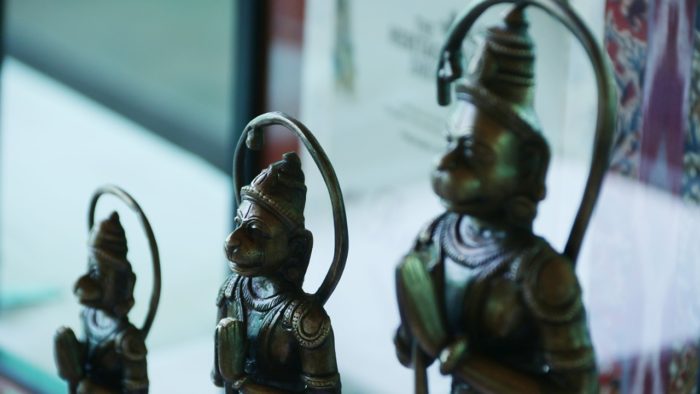The greetings that humans share at initial contact varies from country to country and from culture to culture. In the wake of the spread of the deadly Coronavirus, Israeli Prime Minister Benjamin Netanyahu recently encouraged the citizens of Israel to adopt ‘Namaste’ – an Indian greeting, as a measure to prevent contact, yet remain convivial.
In Europe, German Chancellor Angela Merkel at a summit in Berlin on March 2 approached the Federal Minister of the Interior of Germany Horst Seehofer for a handshake but was ‘namaste-d’ instead.
Infact, several countries would have to change their mode of greeting in the wake of Corona. Argentina with its right cheek to right cheek touch, the Mano of Philippines where the knuckles are pressed against the forehead of the other person, sticking one’s tongue out as a mark of respect in Tibet, the triple cheek kiss of Ukraine – left, right, left, the elaborate handshake of Botswana, the Hongi practice of touching noses of New Zealand, the list is endless.
India has many forms of greetings, among which is the salutation with joined palms (the Namaste or Namaskara). For those who assume that there are no other greetings in Indian traditions, Vedic scholar S K Ramachandra Rao talks about the holding and shaking of hands (hasta-laghava), embrace (parishvanga, alinga), and the more elaborate prostrations (pranama) and the touching of feet (pada-sparsa).

Israeli Prime Minister Benjamin Netanyahu
However, it is Namaste which has always been symbolic of India. The word nama occurs in the Rgveda as well as in later Vedic texts. Today, travellers to India are always greeted in airlines with a Namaste, the first point of welcome to the land.
‘Namah’ according to the Laghu-manjusha, writes Dr Ramachandra Rao, “is a process by which the abandonment of one’s possession is accomplished”. He quotes Panini, when saying that ‘namah’ must be construed along with expression like ‘svasti’, ‘svaha’ and ‘svadha’ all of which mean giving up or tyaga.
Rao says the expression ‘nama’ in namaskara is derived from the root ‘nam’ which means to bend, to bow, to sink, to incline, in terms of submitting oneself humbly. “It is cognate with the Greek ‘nemo’, ‘nemos’ and ‘nomos’, the Latin ‘nemus’, the old Saxon ‘niman’, the German ‘neman’ and ‘nehmen’.”
In his book Bharatiya Pranama Paddhati (Respectful Salutations in India), Dr Rao says Namaskara is supposed to be three-fold: “physical or bodily (kayika), verbal (vachika or vagbhava) and of the mind (manasika).
Bodily namaskaras are of three types, prostrating by extending one’s legs and arms and touching the earth with the entire body, knees and head, bending and touching the earth with only the knees and the head and namaskara with only palms joined. Verbal namaskaras include recitation of poems or prose, or reciting hymns from Puranic or Vedic texts or using one’s own words. Namaskaras of the mind include supplications to the deity. Of the three kinds, Dr Rao says that the most meritorious are the bodily kind because they involve the other two.
Much importance is given to the pranama and a proper pranama is considered “itself a sacrifice and superior to even the performance of sacrifices,” writes Dr Rao. The Skanda –purana says that the pranama in which the knees touch the ground and the head is bent low towards the earth is as effective as an Aswamedha sacrifice.
Namaste and Indian Philosophy
In Indian philosophy, the meaning of the word ‘namah’ follows its usage. “The word ‘namah’ is split into na and mah, the former syllable signifying negation, and the later representing the word mama. The meaning would then be ‘not mine’,” writes Dr Rao. He says this implies that the soul belongs to the deity, and there can be nothing that the soul can claim as its own.
Greeting with folded hands is a common gesture in dance and sculpture too. The palm joining is known as ‘anjali mudra' with mudra being a conventional hand posture. The joining of the palms heads the list of 24 samyuta-hastas (where the two hands are joined), and when it is raised above one’s head it is a salutation to the Gods, when kept in front of one’s face to gurus and when held against one’s chest to learned men.
Prostrations to Surya or the Sun Devata is a supplication for health and well-being. And Yoga practitioners all over the world pay obeisance with the Surya Namaskar. Surya is regarded a visible God and is believed to be pleased with prostrations (Namaskara-priyo bhanuh). And it is He, the benevolent Sun, who is probably keeping the virus at bay in India. Salutations to Him.





